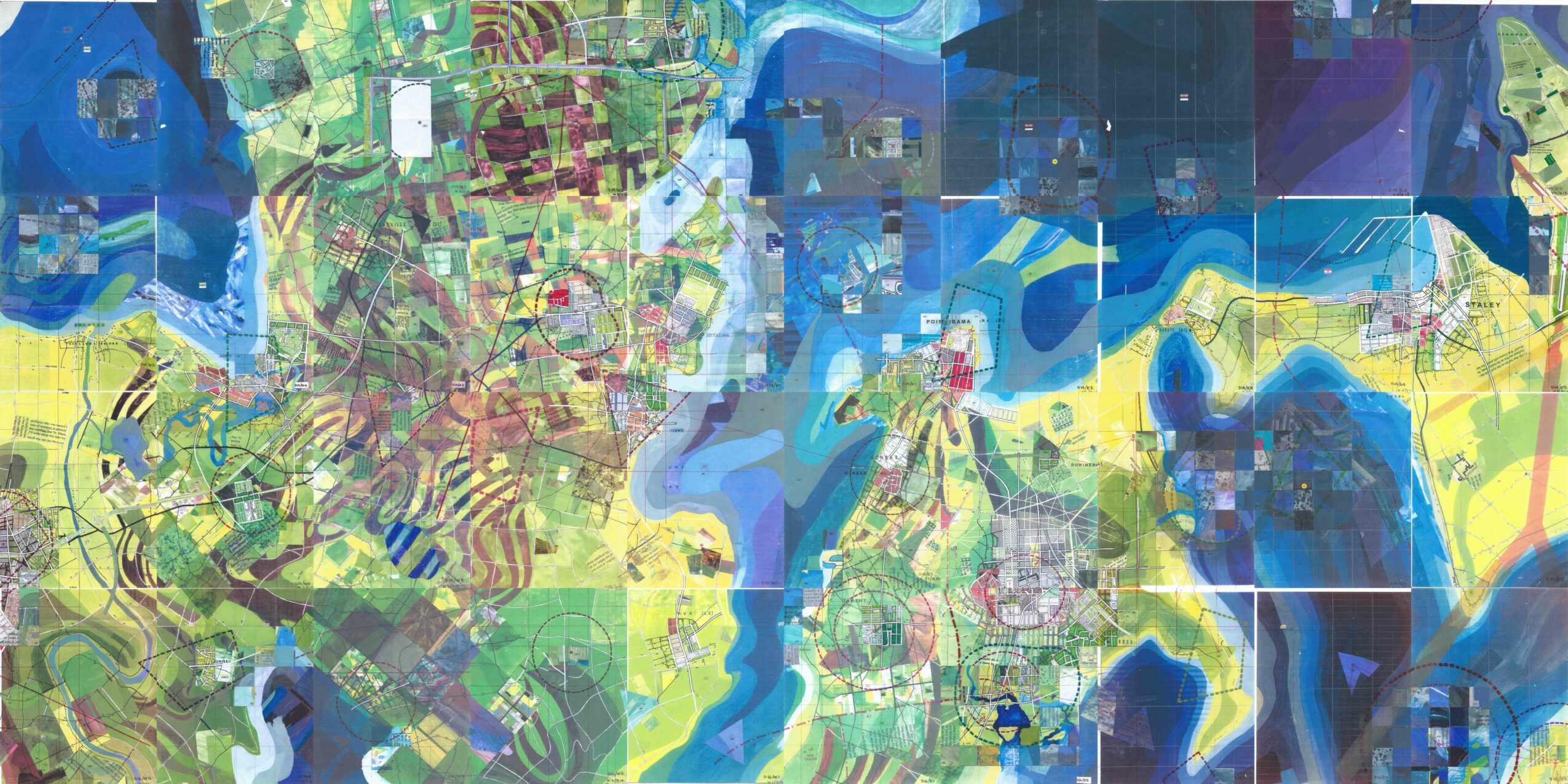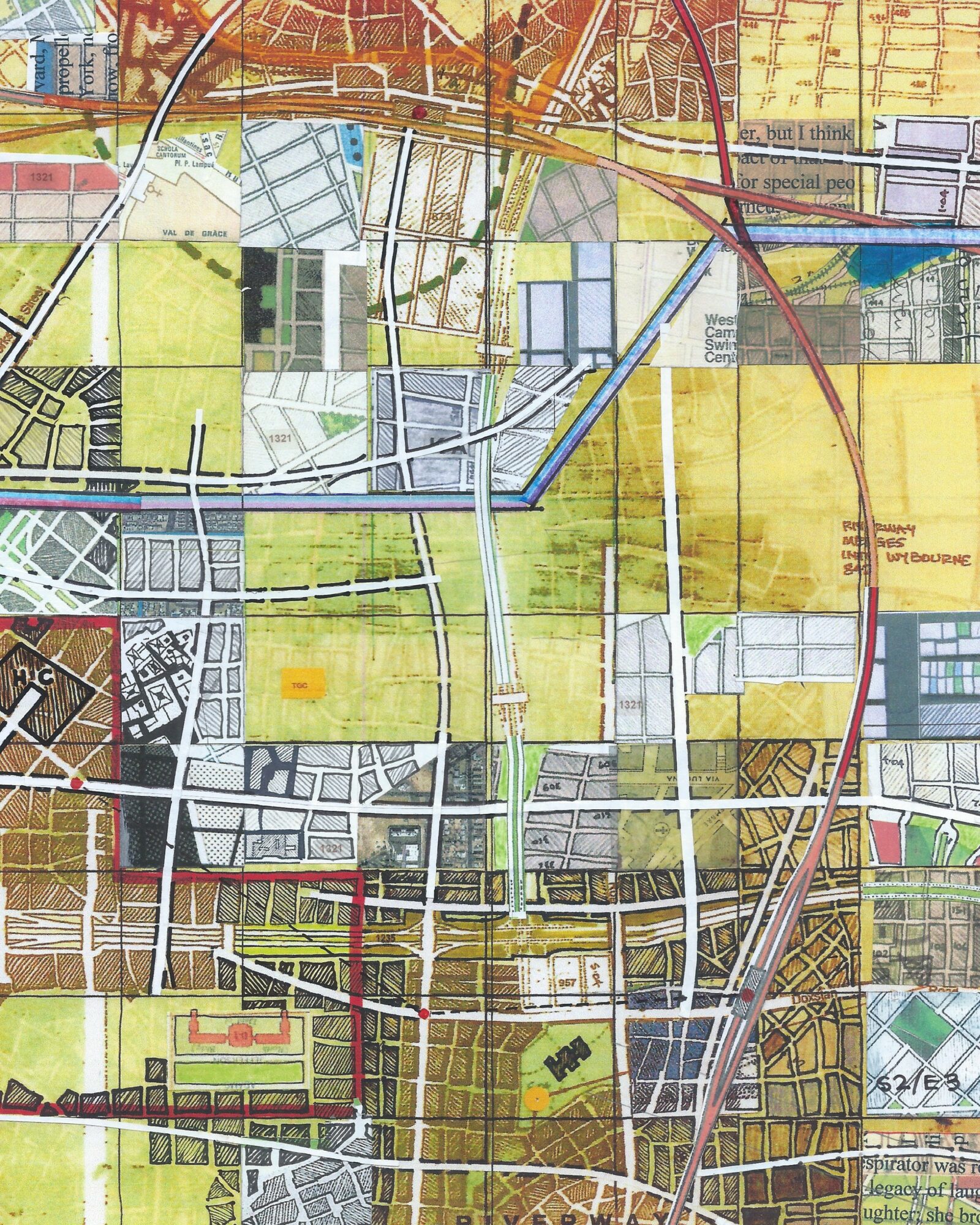

Today we’d like to introduce you to Jerry Gretzinger.
Hi Jerry, can you start by introducing yourself? We’d love to learn more about how you got to where you are today?
I was born in Grand Rapids, Michigan in 1942, and studied architecture and liberal arts at the Universities of Michigan and California. I joined the Peace Corps in 1966 and spent 2 years in Tunisia, later returning in 1968 as an architect with an archeological team cataloging the Roman mosaics there. I came back to the United States in 1973 and started a handbag design company in New York. In the early 1980s, my wife, Meg Staley, and I began designing and manufactoring women’s clothing together. We retired to Maple City, Michigan in 2004, which has allowed me more time for my artistic pursuits.
Can you talk to us a bit about the challenges and lessons you’ve learned along the way. Looking back would you say it’s been easy or smooth in retrospect?
One of the toughest parts of my career came when I moved to New York City. Up to this point, my career and projects were more academic in nature, but I was realizing that I would need to pursue additional degrees if I wanted to move forward in that direction. However, I was feeling a desire to make things with my hands and sell them as a means of making a living. This transition was hard and I struggled financially at first until I was finally able to find a product that had comercial viability. My sling bag was the breakthrough product that allowed me to build my company and eventually my career in the clothing design world. Many other of my artistic pursuits (including “Jerry’s Map”) were enabled by the stability that I gained through my work with my company.
Thanks for sharing that. So, maybe next you can tell us a bit more about your work?
The project that I am most known has been a life-long pursuit called “Jerry’s Map.” In the summer of 1963, I began drawing a map of an imaginary city. The work started as a doodle done in my spare time while working at a tedious job. I continued to add to that map through the years until, in 1983, I set it aside to put my free time to other use. The Map was stored my attic in Cold Springs, New York for many years until my son, Henry, found it one day while rummaging around. Seeing it then triggered me to dust it off and continue the project.
Since 2003, The Map has evolved into a two-dimensional “virtual world” art project which is now comprised of over 4000 individual eight by ten inch panels. When assembled, these panels form an approximate circle that spans nearly 60 feet tall and 60 feet wide. The Map is organized around North, South, East, and West coordinates that originate at the center of the circle. Each panel’s location in this matrix does not change, but the panels themselves are continually revised based on instructions drawn from a custom deck of cards that I have made for myself to perpetuate this project.
Each map panel is composed using some combination of acrylic paint, marker, colored pencil, ink, collage, and inkjet print on heavy paper. The work on each panel is dictated by the interplay of an elaborate set of rules and randomly generated instructions – allowing me the ability to set parameters for The Map’s development and let these rules guide the evolution of this virtual world. Each map panel is periodically scanned to digitally document the progression of activity within this virtual world – and subsequently photocopied to spawn a new, original piece of art. I integrate materials from my everyday life into The Map. Mailing labels, discarded food packaging, receipts, to-do lists, personal journal entries, family photographs or pictures that I take during walks on my farm in Maple City, MI all become a documentation of my life and a manifestation of how memories are transformed over time in their recollection. As time passes, Jerry’s Map, is slowly evolving into an abstract composition rather than a literal map, but still contains the record of the early history, cities, and inhabitants of the map world started over six decades ago. The ongoing relationship that I have with The Map isn’t so much an autobiographical look in the mirror, but more like raising a child. I give instructions about how I would hope The Map to behave or look, but I find that it often responds in ways that I don’t expect. I find myself constantly recalibrating elements that produce the work – reorienting it to my evolving aesthetic sensibilities.
Any advice for finding a mentor or networking in general?
The best advice I would give would be to be open to what comes your way and not closing off potential avenues for help, advice and information. Much of my success has come through relationships and connections that I built over time as people become more aware of my projects. It didn’t happen all at once and many of these connections were completely unexpected. You never know where things will lead.
Pricing:
- Each 8″ x 10″ Map Panel = $40
Contact Info:
- Website: https://www.jerrysmap.com
- Instagram: https://www.instagram.com/jerrysmap_1963/
- Facebook: https://www.facebook.com/jerrysmap1963
- Twitter: https://x.com/jerrysmap
- Youtube: https://www.youtube.com/@jerrygretzinger9861
- Other: https://www.reddit.com/r/JerryMapping/



















